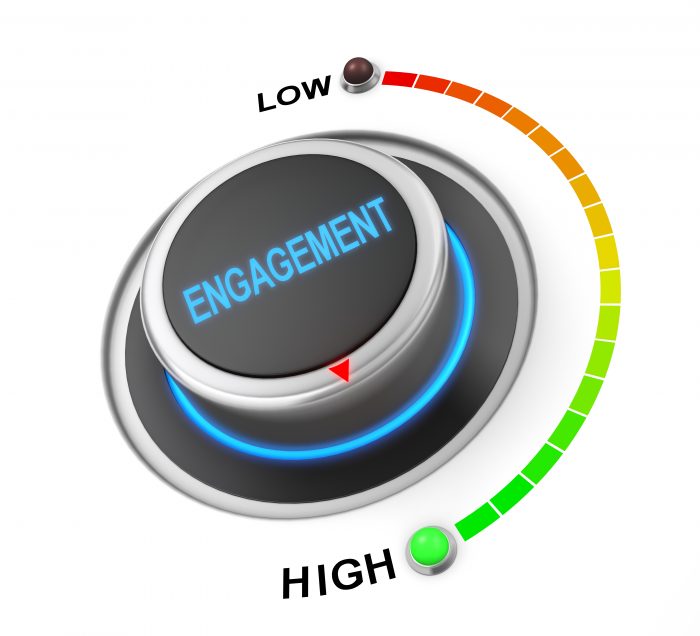August 21, 2019 | Customer Engagement
 The following is a contributed article by Andrew Heath, Managing Director, Utilities Intelligence, at J.D. Power
The following is a contributed article by Andrew Heath, Managing Director, Utilities Intelligence, at J.D. Power
A growing percentage of senior executives across the utility sectors — gas, electric, water, and others — are coming to an interesting new realization when it comes to digital engagement and customer satisfaction.
It is no longer just a “nice-to-have” metric that looks good on community press releases and corporate annual reports; it is becoming the key to driving down costs and laying the foundation for investments in infrastructure and utility modernization initiatives that will be critical to operations as we move into the third decade of the millennium.
This is true for public, private and community-run utilities. Analysis from the recently-released “2019 Utility Digital Experience Study” by J.D. Power reveals that the ability to connect with ratepayers — when, where and how they desire — can have a measurable impact on cost structure, investor relations as well as the ability to engage with key state and local regulators, legislators and government agencies.
Spend less — please more
On the cost side of the equation, the math is pretty straightforward. When properly designed, digital channels have a proven track record of eliminating entire categories of cost while improving the engagement experience.
It turns out that consumers — across all demographics, not just those in the millennial and Gen Z categories — are perfectly happy to use websites and mobile apps to take care of their business with utilities.
In fact, ratepayers almost universally prefer the convenience of mobile and online engagements to waiting on the phone for often-overwhelmed call center staff to take care of routine transactions. There is a growing expectation for the ability to log in to see the status of their accounts, make modifications, and of course make payments via intuitive and easy-to-use interfaces.
It is a habit that they are porting from the digital aspects of the rest of their lives as e-commerce companies, financial services organizations along with media and entertainment firms — to name a few — define the expectations consumers have for their commercial relationships.
That said, building high-quality digital experiences are much easier to propose than they are to develop and deploy.
As a sector, utility companies have lagged behind most other service industries in making digital engagement a priority. It has therefore been an area that has been underfunded and understaffed, which has contributed materially to utility sector underperformance in customer satisfaction levels compared to other industries.
The consequences have been significant. While reliance on traditional contact center staff as the front-line for customer engagement represents one of the largest line items in utilities companies’ go-to-market budgets, it has done little to address the needs of ratepayers.
In short, it is an expensive strategy that degrades the day-to-day customer experience.
Moreover, it diverts resources away from those instances in which actually talking to a customer service representative is truly important — such as resolving issues that cannot be settled through standard self-service scripts, or for addressing challenges that require expert advice in a timely manner.
Effective digital engagement strategies can free up resources to deliver the routine and value-added services that build meaningful goodwill with ratepayers.
Beyond the balance sheet
Goodwill matters. While ratepayers served by local monopoly providers of utility services do not have access to the range of choices they are used to having in the rest of their digital lives, they are also citizens and voters.
So, while they can’t easily switch providers, ratepayers are a central focus point for the public utility commissioners, regulators, and locally elected municipal leaders responsible for utility operation oversight.
The ability to make the case for growth and infrastructure improvements rises with improved customer satisfaction scores. This is most clear with investor-owned utility companies.
There is a relationship between high satisfaction rates and stronger returns on equity from investors and regulators. This has a ripple effect on important attributes — such as profitability and higher bond or credit ratings — which make well-regarded utilities a more attractive investment vehicle.
Among government- or community-owned utilities, evidence of the relationship between satisfaction rates and organizational performance is manifested most clearly in negative outcomes. We have documented how dissatisfied ratepayers have actively advocated against utilities, creating an uphill struggle to secure the resources necessary to implement modernization initiatives and other capital investments.
As we move forward, it is clear that digital engagement strategies will play an increasingly important role in elevating customer satisfaction ratings.
While implementing effective strategies is not easy, the good news is that properly planned and implemented initiatives can actually reduce the operational costs of customer service while building the kind of goodwill that will be critical to achieving important strategic business transformation initiatives.
APOGEE INTERACTIVE, INC. © 2023. ALL RIGHTS RESERVED